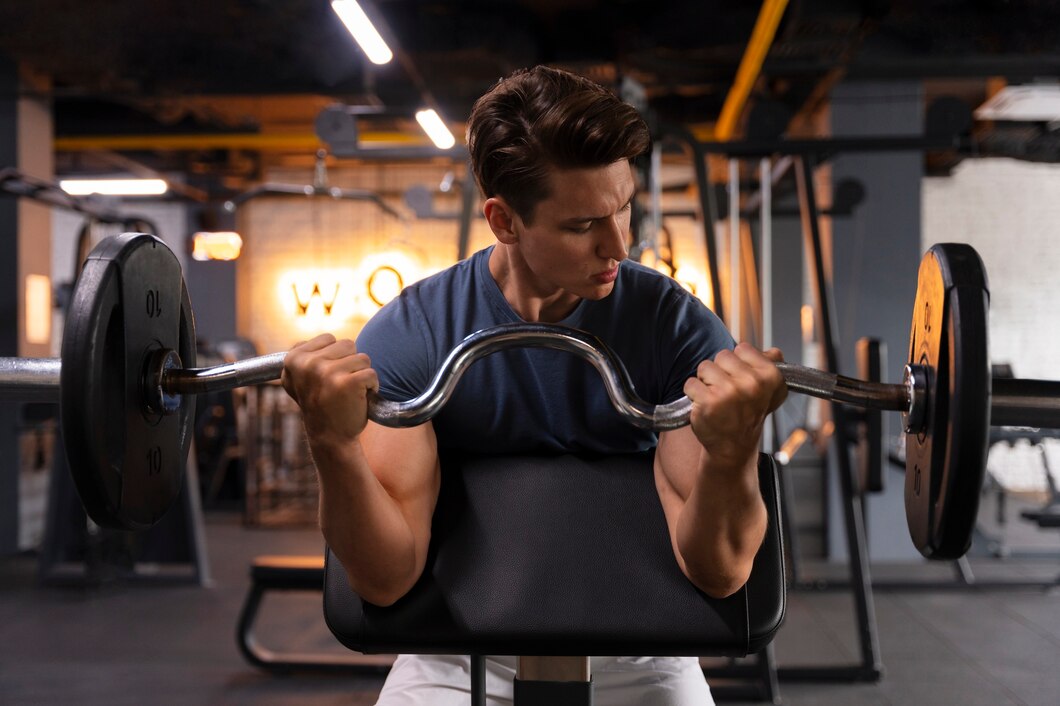
Rethinking Barbell Curls: A Comprehensive Guide to Building Muscular Biceps
For those embarking on a journey to develop big, muscular biceps, whether at home or in a gym, it's crucial to understand the limitations inherent in relying solely on standard barbell curls. My early days in bodybuilding were marked by a common misconception: that barbell curls were the definitive exercise for achieving bicep growth. However, this belief was soon challenged by the realization of the exercise's significant limitations, which stem from three main issues commonly associated with barbell curls.
The Limitations of Barbell Curls
- The typical way most individuals perform barbell curls – in a free-standing position. This means executing the exercise while standing upright, without any back support, such as leaning against a wall. The problem with this approach is that it allows the upper body to sway or jerk, using momentum to aid in lifting the weight during the curling motion.
- Sharp, deep tissue pain in the back of my forearms, a direct result of the hand position required by the exercise, which placed excessive stress on my forearms.
- The restricted range of resistance they provide to the biceps, which is insufficient for comprehensive bicep growth.
Alternatives and Solutions
For those who are committed to including barbell curls in their regimen, a potential solution to this problem is to perform the exercise with the back supported against a wall. Additionally, switching to an EZ Curl bar, particularly for standing curls performed with back support against a wall, can be beneficial. The unique design of the EZ Curl bar offers grip positions that are far more comfortable compared to a straight barbell. Moreover, incorporating dumbbell exercises into the routine is essential for achieving maximum bicep size, strength, and definition.
Comprehensive Bicep Growth
An effective bicep building program should place a heavy emphasis on dumbbell training. This approach should include a variety of exercises such as concentration curls, dumbbell preacher curls, seated alternating curls, and Winston Curls. Integrating an EZ Curl bar and dumbbells into workouts can lead to noticeable improvements. In fact, it's possible to achieve significant bicep growth without relying exclusively on barbell curls.
Understanding Biomechanics and Progressive Overload
Understanding the biomechanics of bicep training is crucial. The biceps are not just about flexing the elbow; they also play a role in supinating the forearm (turning the palm up) and, to a lesser extent, shoulder flexion. Hammer curls are excellent for targeting the brachialis, a muscle that lies beneath the biceps. Additionally, the importance of progressive overload cannot be overstated in any muscle-building endeavor, including biceps training.
Nutrition and Consistency
Nutrition also plays a pivotal role in muscle development. Consuming a balanced diet rich in protein, healthy fats, and complex carbohydrates, alongside adequate hydration, provides the necessary fuel and building blocks for muscle growth. Supplements like whey protein, BCAAs (Branched-Chain Amino Acids), and creatine can also support muscle recovery and growth when used in conjunction with a well-rounded diet and training program.
Finally, consistency and patience are key in any fitness journey. Building muscular biceps, or any muscle group, is a process that requires time, dedication, and consistent effort. Avoid the temptation to seek quick fixes or to overtrain, as these can lead to injury and setbacks.
In conclusion, while barbell curls have their place in a bicep training regimen, they are not the be-all and end-all for achieving big, muscular biceps. A more holistic approach that includes a variety of exercises, proper technique, attention to nutrition and recovery, and a focus on progressive overload will yield far better results. Remember, the journey to impressive biceps is a marathon, not a sprint, and requires a well-thought-out and executed strategy.



Leave a Comment